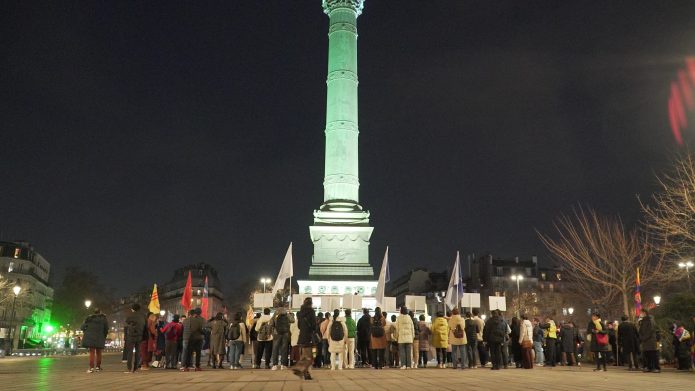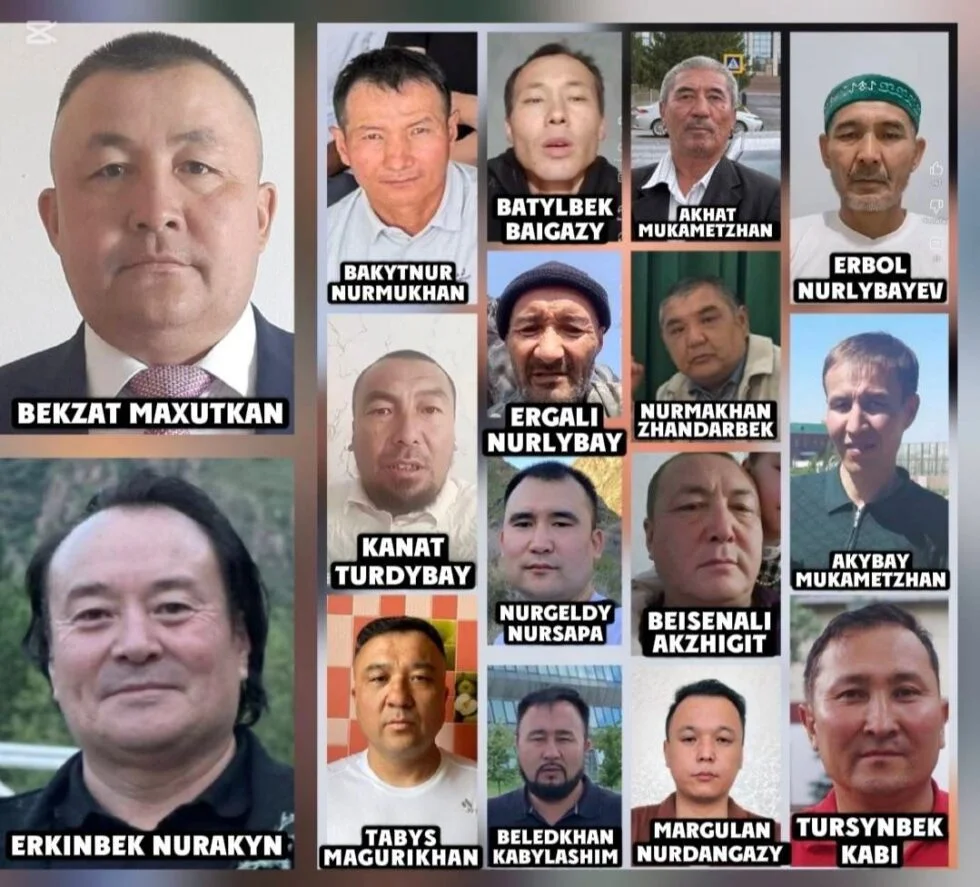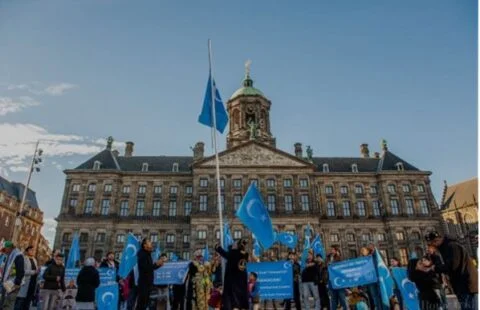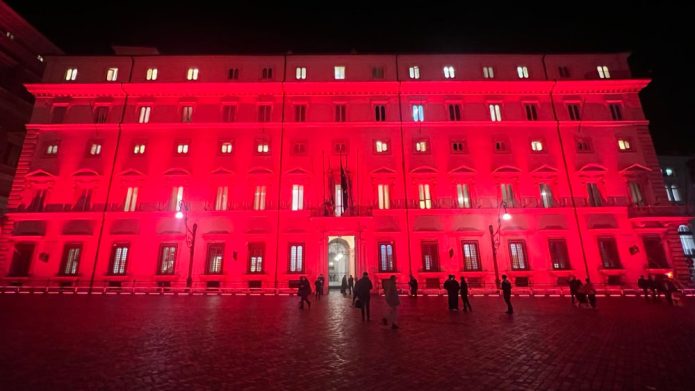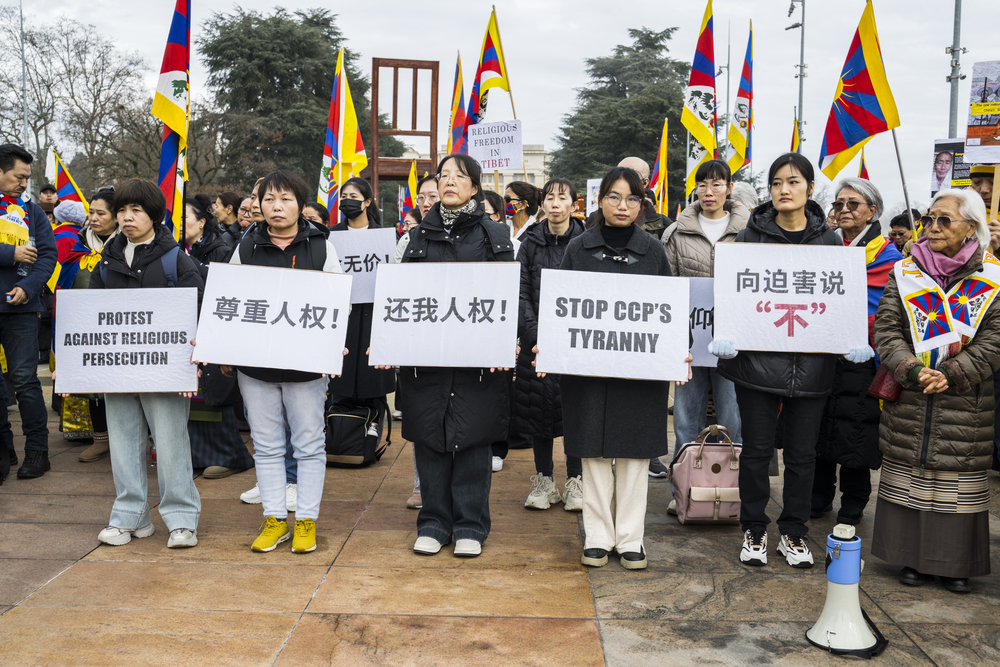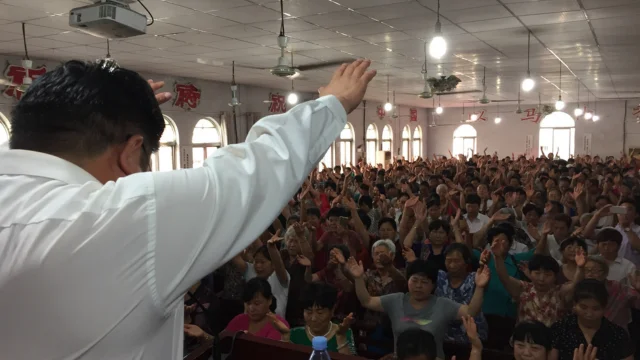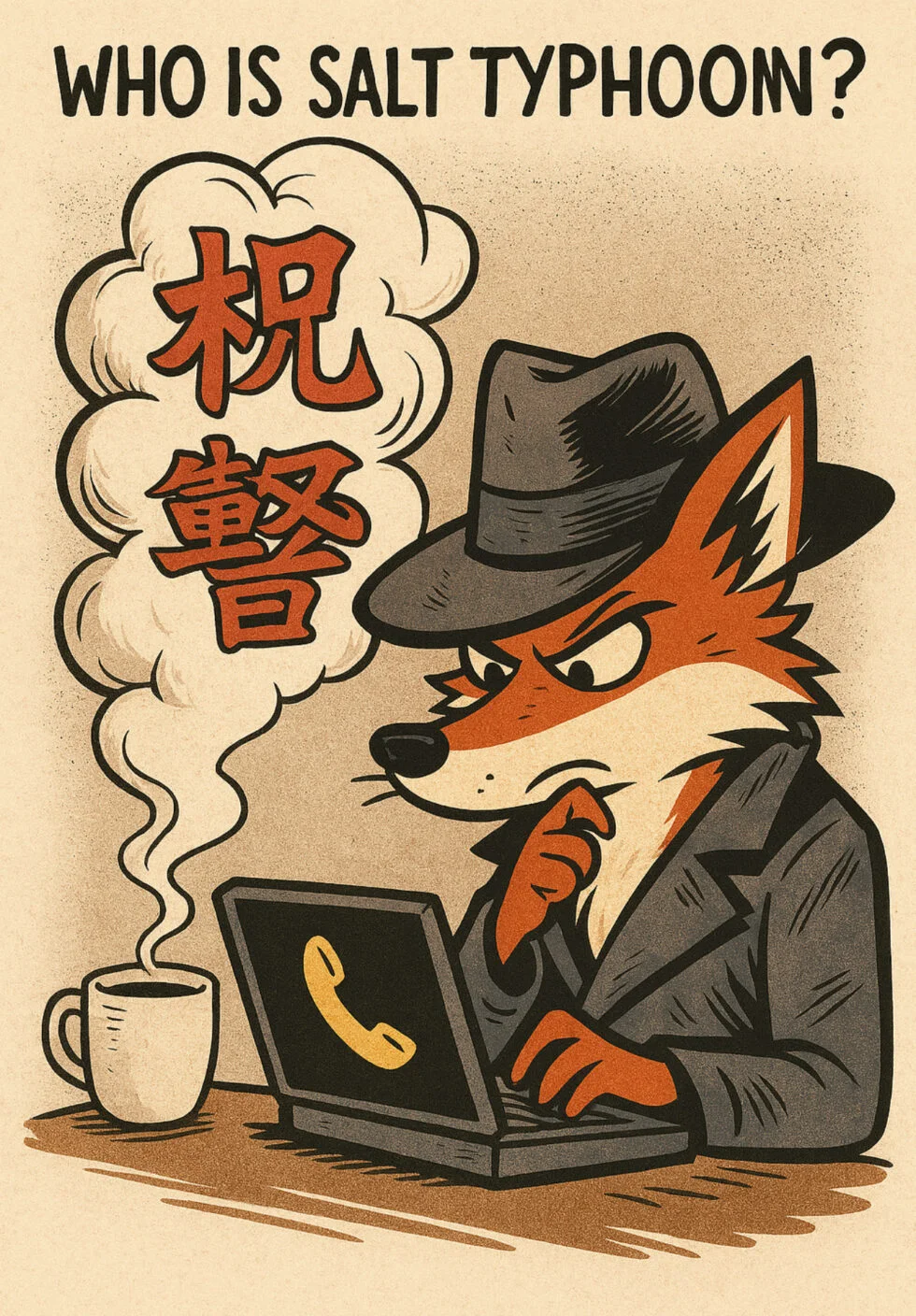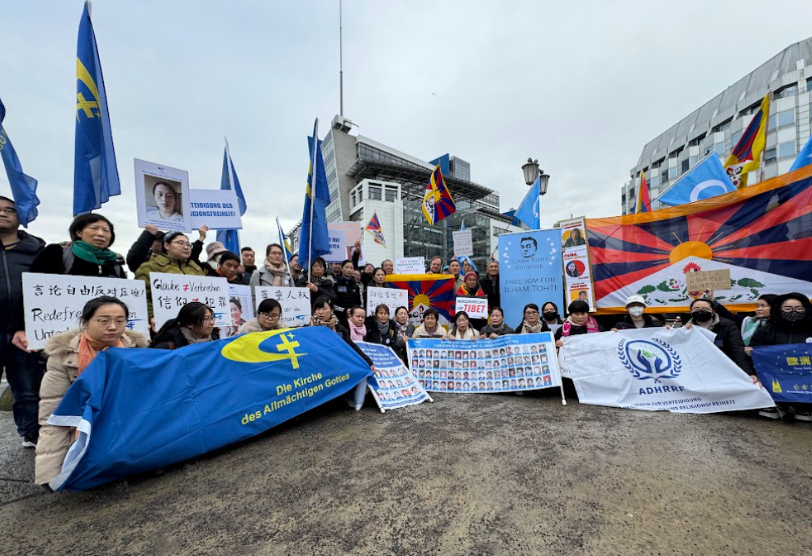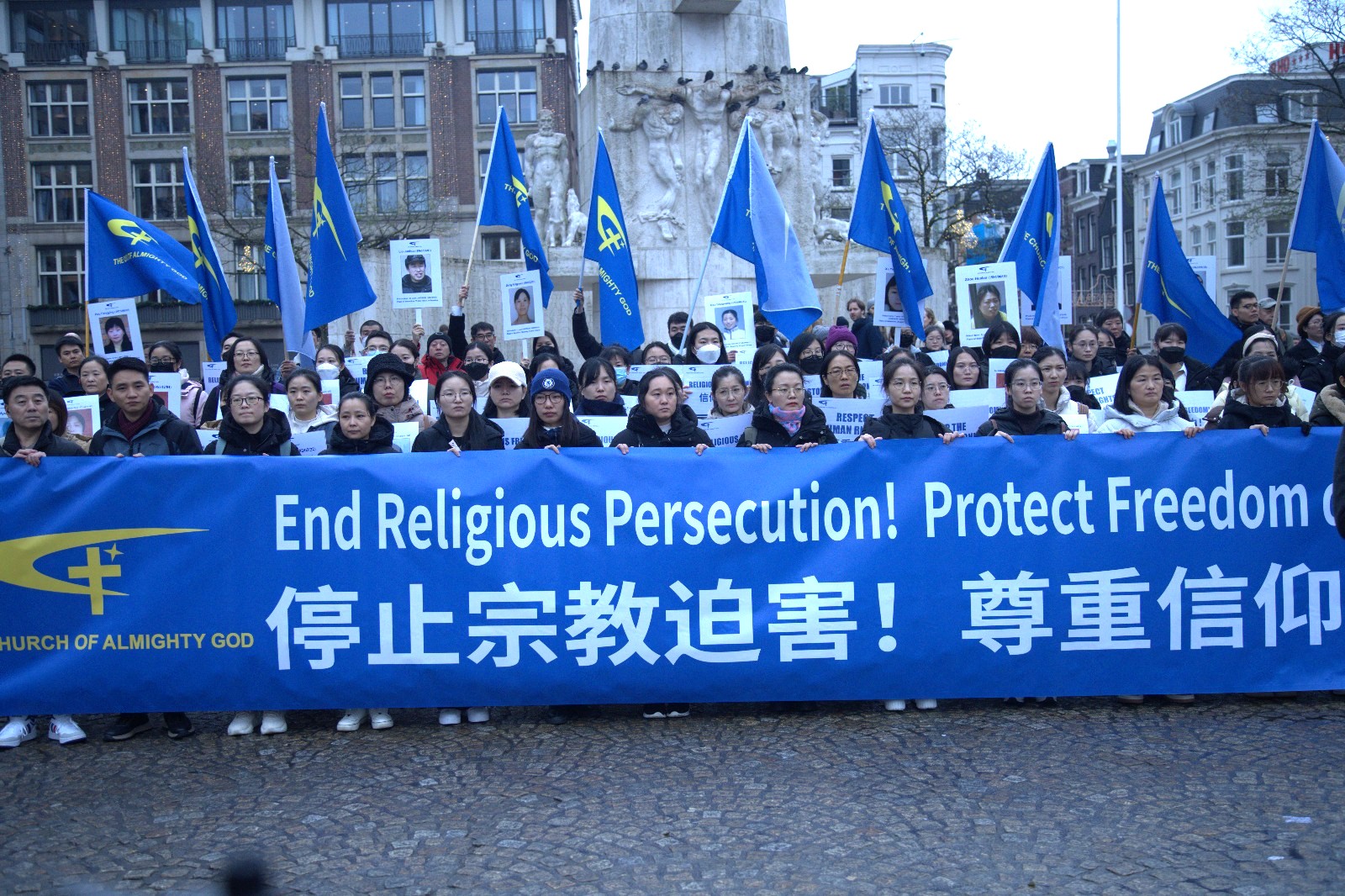Executive Summary
IN THIS SECTION: CHINA | TIBET (BELOW) | XINJIANG
The United States recognizes the Tibetan Autonomous Region (TAR) and Tibetan autonomous prefectures and counties in other provinces to be part of the People’s Republic of China. The constitution of the People’s Republic of China states citizens “enjoy freedom of religious belief” but limits protections for religious practice to “normal religious activities” without defining “normal.” Central government regulations implemented February 1 stipulate religious activity “must not harm national security” and place new restrictions on religious schools, donations, and travel. In the TAR and other Tibetan areas, authorities continued to engage in widespread interference in religious practices, especially in Tibetan Buddhist monasteries and nunneries. There were reports of forced disappearance, torture, physical abuse, prolonged detention without trial, and arrests of individuals due to their religious practices. Travel restrictions hindered traditional religious practices and pilgrimages. Repression increased around politically sensitive events, religious anniversaries, and the Dalai Lama’s birthday, according to numerous sources. Self-immolations leading to death in protest of government policies continued, and four individuals reportedly set themselves on fire and died during the year. The nongovernmental organization (NGO) Tibetan Center for Human Rights and Democracy (TCHRD), reported in May torture, including sexual abuse of Tibetan Buddhist nuns, took place in a re-education camp in the TAR. According to TCHRD, authorities also subjected inmates to collective punishment, food and sleep deprivation, prolonged wall standing and beatings. According to local sources, during the year authorities continued an ongoing multi-year project to evict approximately 3,000 monks and nuns from Buddhist institutes at Larung Gar and Yachen Gar, destroying as many as 1,500 of their residences and subjecting many of them to “patriotic and legal re-education.” Authorities often justified their interference with Tibetan Buddhist monasteries by saying the religious institutions engaged in separatist or pro-independence activities, and undermined the leadership of the Chinese Communist Party (CCP). The government routinely denigrated the Dalai Lama, whom most Tibetan Buddhists revered as their most important spiritual leader, and forbade Tibetans from venerating him and other religious leaders associated with him.
Some Tibetans continued to encounter societal discrimination when seeking employment, engaging in business, and traveling for pilgrimage, according to multiple sources. Because expressions of Tibetan identity and religion were closely linked, it was difficult to categorize many incidents as being solely based on religion.
The U.S. government repeatedly pressed Chinese authorities to respect religious freedom for all people and to allow Tibetans to preserve, practice, teach, and develop their religious traditions and language without interference from the government. In July during the Ministerial to Advance Religious Freedom in Washington, the Vice President and Secretary of State met with Kusho Golog Jigme, a former Tibetan political prisoner, to highlight continued U.S. government support for religious freedom in Tibet. U.S. government officials expressed concerns to the Chinese government at senior levels about the severe restrictions imposed on Tibetans’ ability to exercise their human rights and fundamental freedoms, including religious freedom and cultural rights. Embassy and other U.S. officials urged the Chinese government to re-examine the policies that threaten Tibet’s distinct religious, cultural, and linguistic identity, including the continuing demolition campaign at the Larung Gar Tibetan Buddhist Institute and Yachen Gar Tibetan Buddhist Institute. U.S. officials underscored that decisions on the reincarnation of the Dalai Lama should be made solely by faith leaders and also raised concerns about the continued disappearance of the Panchen Lama. While diplomatic access to the TAR remained tightly controlled, four U.S. visits occurred.
Section I. Religious Demography
Section II. Status of Government Respect for Religious Freedom
LEGAL FRAMEWORK
The constitution of the People’s Republic of China states citizens enjoy “freedom of religious belief,” but limits protections for religious practice to “normal religious activities” without defining “normal.” The constitution bans the state, public organizations, and individuals from compelling citizens to believe in, or not believe in, any religion. It says religion may not be used to disrupt public order, impair the health of citizens, or interfere with the educational system. The constitution states religious bodies and affairs are not to be “subject to any foreign control.” Only religious groups belonging to one of five state-sanctioned “patriotic religious associations” (Buddhist, Taoist, Muslim, Catholic, and Protestant), however, are permitted to register with the government and legally hold worship services or other religious ceremonies and activities.
Regulations issued by the central government’s State Administration of Religious Affairs (SARA) codify its control over the selection of Tibetan religious leaders, including reincarnate lamas. These regulations stipulate that, depending on the perceived geographic area of influence of the lama, relevant administrative entities may deny permission for a lama to be recognized as reincarnated and these entities must approve reincarnations. The State Council has the right to deny the recognition of reincarnations of high lamas of “especially great influence.” The regulations also state no foreign organization or individual may interfere in the selection of reincarnate lamas, and all reincarnate lamas must be reborn within China. The government maintains a registry of officially recognized reincarnate lamas.
Within the TAR, regulations issued by SARA assert state control over all aspects of Tibetan Buddhism, including religious venues, groups, and personnel. Through local regulations issued under the framework of the national-level Management Regulation of Tibetan Buddhist Monasteries, governments of the TAR and other Tibetan areas control the registration of monasteries, nunneries, and other Tibetan Buddhist religious centers. The regulations also give the government formal control over building and managing religious structures and require monasteries to obtain official permission to hold large-scale religious events or gatherings.
The central government’s State Council revisions to the Regulations on Religious Affairs became effective on February 1. The revisions require religious groups to register with the government, increase penalties by imposing fines on landlords for “providing facilities” for unauthorized religious activities, and restrict contact with overseas religious institutions, including a new requirement for religious groups to seek approval to travel abroad and a prohibition on “accepting domination by external forces.” The revisions increase regulations for religious schools by submitting them to the same oversight as places of worship and impose new restrictions on religious groups conducting business or investments, including placing limits on the amount of donations they can receive and restricting the publication of religious material to guidelines determined by the State Publishing Administration. Additionally, the revisions require that religious activity “must not harm national security.” While existing regulations stipulate the obligations of religious groups to abide by the law and safeguard national unity, the new revisions specify steps to respond to “religious extremism,” leaving “extremism” undefined. These steps include monitoring groups, individuals, and institutions, and recommending penalties such as suspending groups and canceling clergy credentials. The new regulations also limit the online activities of religious groups, requiring such activities be approved by the provincial Religious Affairs Bureau.
A new policy, based on ideas discussed at the national-level Conference on Religion and Work in 2016 and introduced on August 31 in the TAR, requires Tibetan monks and nuns to undergo political training in state ideology. The policy requires monks and nuns to demonstrate – in addition to competence in religious studies – “political reliability,” “moral integrity capable of impressing the public,” and willingness to “play an active role at critical moments.”
To establish places of worship, religious organizations must receive approval from the religious affairs department of the relevant local government both when the facility is proposed and again before any services are held at that location. Religious organizations must submit dozens of documents in order to register during these approval processes, including detailed management plans of their religious activities, exhaustive financial records, and personal information on all staff members. Religious communities not going through the formal registration process may not legally have a set facility or worship meeting space. Therefore, each time they want to reserve a space for worship, such as by renting a hotel or an apartment, they need to seek a separate approval from government authorities for each service. Worshipping in a space without pre-approval, either through the formal registration process or by seeking an approval for each service, is considered an illegal religious activity, which may be criminally or administratively punished.
The TAR government has the right to deny any individual’s application to take up religious orders. The regulations also require monks and nuns to obtain permission from officials in both the originating and receiving counties before traveling to other prefectures or “county-level cities” within the TAR to “practice their religion,” engage in religious activities, study, or teach. Tibetan autonomous prefectures outside the TAR have similar regulations.
At the central government level, the CCP Central Committee’s Central Tibet Work Coordination Group, the CCP’s United Front Work Department (UFWD), and SARA are responsible for developing and implementing religious management policies, which are carried out with support from the five “patriotic religious associations” (Buddhist, Protestant, Catholic, Islamic, and Taoist). At local levels, party leaders and branches of the UFWD, SARA, and the state-controlled Buddhist Association of China (BAC) are required to coordinate implementation of religious policies in monasteries, and many have stationed party officials and government officials, including public security agents, in monasteries in Tibetan areas.
CCP members, including Tibetans and retired officials, are required to be atheists and are forbidden from engaging in religious practices. CCP members who belong to religious organizations are subject to various types of punishment, including expulsion from the CCP.
GOVERNMENT PRACTICES
During the year, four Tibetans reportedly self-immolated as a means of protest against government policies, compared to six individuals in 2017. Some experts attributed reports of the decreasing number of self-immolations to tighter control measures by authorities. Sources said that during the year, authorities told family members not to discuss self-immolation cases. The NGO Free Tibet reported since 2009 more than 150 Tibetans had set themselves on fire in protest against what they said was occupation and human rights abuses on Tibet’s religion and culture under Chinese rule. According to media reports, 16-year-old Gendun Gyatso self-immolated in Ngaba (Chinese: Aba) County, Tibetan Autonomous Prefecture (TAP) in Sichuan Province, on December 8 or 9 and died of his injuries. Media said that on December 8, Drugkho (reportedly also known by his monastic name Choekyi Gyatso), a young Tibetan man, set himself on fire in Ngaba shouting, “long live the Dalai Lama.” Some news reports stated he may have survived. Reportedly, both Gendun and Drugkho were monks at Kirti Monastery. According to the website Tibet Sun, on November 4 in Ngaba, Dopo, another Tibetan youth, died after carrying out a self-immolation, reportedly shouting “Long live the Dalai Lama.” On March 7, Tsekho Tugchak (also spelled “Topchag”), a man in his forties, reportedly called out, “Long live His Holiness the Dalai Lama and freedom for Tibet” as he self-immolated in Meruma Township, Ngaba County; the location of his remains was unknown. Ngaba County had also been the site of numerous prior self-immolations by monks from the Kirti Monastery.
There were reports of the forced disappearance, torture, arbitrary arrest, and physical abuse of individuals on account of their religious beliefs or practices.
The whereabouts of Gedhun Choekyi Nyima, recognized as the 11th Panchen Lama by the Dalai Lama and most Tibetans, remained unknown since his 1995 forced disappearance by Chinese authorities. Nyima was six years old at the time he and his parents were reportedly abducted. Authorities did not provide information on his whereabouts, and stated previously that he was “living a normal life” and did “not wish to be disturbed.” The Panchen Lama was considered by the Gelugpa school of Tibetan Buddhism the second-most-prominent leader after the Dalai Lama.
The TCHRD, an NGO run and staffed by Tibetans in exile, reported in May a Tibetan monk’s account of torture and sexual abuse in a re-education camp in the TAR. According to TCHRD, the unnamed monk spent approximately four months in a re-education camp in Sog County of Naqchu (Chinese: Naqu) where he said all inmates, except for “two or three laypersons,” were monks and nuns. The monk said detainees had to attend self-criticism sessions and participate in military drills; detention officers also beat older monks and nuns who were physically weak and did not understand Chinese. The monk said, “Many nuns would lose consciousness during the [military] drills. Sometimes officers would take unconscious nuns inside where I saw them fondle the nuns’ breasts and grope all over their body.” He also stated some inmates “were singled out and beaten up so severely with electric batons that they would lose consciousness. The officers would revive the unconscious inmates by splashing water on their faces. This cycle of losing and reviving consciousness would go on for some time at the end of which the officers would use a black plastic pipe to beat and pour water on all parts of the body and then use electric batons to beat some more. Soon black and blue marks would appear on the victim’s body and render him or her half-dead.” TCHRD reported authorities subjected inmates to torture and collective punishment, food deprivation, sleep deprivation, prolonged wall standing, and beatings.
According to The Tibet Post, Geshe Tsewang Namgyal, formerly a monk from Draggo Monastery in Kardze (Chinese: Ganzi) County, Kardze TAP, Sichuan Province, reported that authorities tortured him while he was in prison, resulting in permanent injuries to his legs. Authorities released Geshe Namgyal on January 24, after he completed his six-year prison term. Officials arrested him in 2012 for participating in a peaceful protest against China’s policies in Tibet.
Limited access to information about prisoners made it difficult to ascertain the exact number of individuals imprisoned on account of their religious beliefs or affiliation, determine the charges brought against them, or assess the extent and severity of abuses they suffered. The U.S. Congressional-Executive Commission on China’s Political Prisoner Database included 4,037 records of Tibetan political prisoners, of whom 300 were known to be detained or imprisoned as of December 21. Of these, 131 were reported to be current or former monks, nuns, or Tibetan Buddhist reincarnate teachers. Of the 120 cases for which there was available information on sentencing, punishment ranged from two years’ to life imprisonment. Observers, including commission staff, believed the actual number of Tibetan political prisoners and detainees to be much higher, but the lack of access to prisoners and prisons, as well as the lack of reliable official statistics, made a precise determination difficult. Authorities continued to hold an unknown number of persons in detention centers rather than prisons.
According to the NGO International Campaign for Tibet and other sources, on December 10, the anniversary of the Dalai Lama’s receiving the Nobel Peace Prize, police in Ngaba severely beat Sangay (also spelled “Sanggye”) Gyatso, a monk from Kirti Monastery, as he protested for freedom for Tibet. Police detained him, and his whereabouts remained unknown at years end.
According to the NGO Canada Tibet Committee, in February local authorities detained Karma, a leader of Markor village in the TAR’s Naqchu Prefecture, for challenging an official order to sign a document permitting local authorities to conduct mining activities at Sebtra Zagyen mountain. Local Tibetans consider Sebtra Zagyen a sacred location. The Canada Tibet Committee also carried a report by TCHRD that in April officials detained and beat approximately 30 Tibetans, at least two of whom were monks, after information about Karma’s detention leaked to the Tibetan exile community. According to local sources, Karma’s whereabouts remained unknown at year’s end.
In May TAR authorities detained Gangye, a Tibetan man from Sog County, for possessing religious books written by the Dalai Lama and CDs featuring the religious leader’s teachings, according to news portal Phayul. His whereabouts remained unknown at year’s end.
According to local religious community sources, between September 5 and September 9, security forces separately detained three Tibetan monks from Meruma. The monks were reportedly protesting against government policies, specifically the requirement for Tibetans to be at least 18 years old to become monks (historically children as young as toddlers began the process of study to become monks) and the government’s interference in monastic management. On September 5, authorities detained Dorje Rabten of Kirti Monastery immediately following his protest. On September 6, they also detained Tenzin Gelek after he protested against Dorje’s detention. Similarly, on September 9, officials took Lobsang Dargy into custody following his protest against the detention of both Dorje and Tenzin. Their whereabouts remained unknown at year’s end.
According to the Central Tibetan Administration, on January 28, authorities arrested and detained Lodoe Gyatso from Naqchu Prefecture of the TAR after he staged a peaceful protest in front of the Potala Palace in Lhasa. Prior to the protest, Lodoe Gyatso published a video announcing his plans to organize a peaceful demonstration in support of the Tibetan people’s commitment to world peace and nonviolence under the guidance of the Dalai Lama.
Radio Free Asia reported that in September authorities detained Tibetan monks Nyida, Kelsang, Nesang, and Choeje of Gomang Monastery in Ngaba TAP, Sichuan Province, for publicly protesting against a government housing project near their monastery. The four detainees were reportedly still in Khyungchu County’s custody. A fifth monk was reportedly detained and released.
According to a February report by Radio Free Asia, at the end of 2017 authorities convicted Tashi Choeying, a Tibetan monk from Tawu (Chinese: Daofu) County of Kardze TAP in Sichuan Province, on an unknown charge and sentenced him to a six-year prison term. Authorities had held Tashi, who had studied in India, incommunicado since November 2016. Religious community sources said Tashi’s conviction may have been due to his communications with the media in India about self-immolation cases in Tawu.
In June Phayul reported local officials raided the residences of two Tibetans from Kardze TAP, Sichuan Province, and arrested the men for possessing photos of the Dalai Lama.
RFA reported in June that authorities released Lobsang Tenzin, formerly a monk at Kirti Monastery in Ngaba County, Sichuan Province, from prison three years before the end of his ten-year prison sentence. He had been jailed in 2011 for allegedly supporting a self-immolation protest.
Authorities continued to exercise strict controls over religious practice and maintained intrusive surveillance of many monasteries and nunneries, including through permanent installation of CCP and public security officials and overt camera surveillance systems at religious sites and monasteries.
Provincial, prefectural, county, and local governments continued to station CCP officials in, and established police stations or security offices adjacent to or on the premises of, many monasteries. For example, the TAR had more than 8,000 government employees working in 1,787 monasteries, according to local sources and Chinese government reporting in 2017. Security forces continued to block access to and from important monasteries during politically sensitive events and political religious anniversaries.
According to many contacts in Ngaba County, Sichuan Province, officials placed family members, relatives, and close friends of self-immolators on a security watch list to prevent them from meeting and communicating with international visitors and, in some cases, deprived them of public benefits.
Authorities met with family members of individuals who had self-immolated and instructed them not to talk about the cases to limit news of self-immolations and other protests from spreading within Tibetan communities and beyond. There were also numerous reports of officials shutting down or restricting local access to the internet and cellular phone services for this purpose. After a self-immolation in December, authorities reportedly instituted a “clampdown” on the area and blocked internet communication.
The government continued to control the approval process of reincarnations of Tibetan Buddhist lamas and supervision of their religious education.
According to local sources, while high-ranking religious leaders and local Tibetan Buddhists attempted to search for the reincarnation of Tenzin Delek Rinpoche, a prominent Tibetan religious leader who died in prison in 2015, security officials closely monitored their efforts and threatened them with imprisonment if the religious leaders continued their search.
The government continued to insist that Gyaltsen Norbu, whom it selected in 1995, was the Panchen Lama’s true reincarnation, and not Gedhun Choekyi Nyima, whom authorities had disappeared that same year. According to numerous Tibetan Buddhist monks and scholars, UFWD and Religious Affairs Bureau officials frequently pressured monks and laypersons, including government officials, to attend religious study sessions presided over by Gyaltsen Norbu, and ordered every Tibetan family in Lhako (Shannan) city to send family members to an August teaching session to ensure hundreds of thousands of people paid him respect. In 1995, authorities installed Gyaltsen Norbu in Tashi Lhunpo Monastery in Shigatse (Chinese: Xigaze), the traditional seat of the Panchen Lama, and visited the monastery every summer since.
In addition, authorities closely supervised the education of many key young reincarnate lamas. In a deviation from traditional custom, government officials, rather than religious leaders, continued to manage the selection of the reincarnate lamas’ religious and lay tutors in the TAR and some other Tibetan areas. Religious leaders reported that, as part of authorities’ interference in reincarnate lamas’ and monks’ religious education, authorities were incentivizing these young men to voluntarily disrobe by emphasizing the attributes of secular life as compared to the more disciplined and austere religious life. Religious leaders and scholars said these and other means of interference continued to cause them concern about the ability of religious traditions to survive for successive generations.
According to media reports, as of December 2017, the government added seven additional “living buddhas” below the age of 16 to the 2017 list of more than 1,300 approved “living buddhas.” Such individuals reportedly continued to undergo training on patriotism and the CCP’s socialist political system. The BAC announced its database of 1,311 “living buddhas” that it deemed “authentic” was nearly complete. Neither the Dalai Lama nor Tenzin Delek Rinpoche was on the list.
The government continued to place restrictions on the size of Buddhist monasteries and other institutions. According to local sources, at Larung Gar, Kardze TAP, Sichuan Province, site of the world’s largest Tibetan Buddhist institute, the government continued its program of evicting monks and nuns that began in 2016. During the year, the government evicted approximately 2,000 monks and nuns from a population that was at least 20,000 in 2016 and demolished an estimated 900 residences, leaving the remaining population at approximately 5,000, according to Human Rights Watch and a local source. Monks and nuns evicted from the institute returned to their hometowns where the source said they were unable to receive “quality religious education” free from government interference. According to Chinese press reports, the government stated the demolition was to prevent fires and promote crowd control. Rights groups said that if safety were the primary motivator for this government action, then other provisions, such as building additional housing that met fire safety codes, could be a way to resolve the issue instead of large-scale demolitions and expulsions. Local sources stated the destruction was to clear the way for tourist infrastructure and to prevent nuns, monks, and laypersons from outside the area, particularly ethnic Han, from studying at the institute. Reportedly, in hopes of saving the institute, Larung Gar’s monastic leadership continued to advise residents not to protest the demolitions.
In January Human Rights Watch described the Chinese government’s interference at Larung Gar as an “extreme control over religious practices,” “an immediate threat to the religious freedom of all Tibetans,” and “a long-term threat to all Chinese.” The organization also noted “the scale of the Communist Party’s intervention at Larung Gar is unprecedented.”
According to local sources, during the year, authorities continued their program of destroying residences at another Buddhist complex at Yachen Gar, also in Kardze Prefecture. During the year, authorities destroyed at least 700 residences and evicted approximately 1,000 monks and nuns from a 2016 estimated population of 10,000 religious practitioners in Yachen Gar. At year’s end, a local source estimated the remaining population to be approximately 5,000. Local sources reported that authorities prohibited monks and nuns from Yachen Gar, who returned to their hometowns in the TAR, from joining any other monastery or nunnery there or participating in any public religious practices.
According to reports, authorities continued “patriotic re-education” campaigns at many monasteries and nunneries across the Tibetan Plateau, forcing monks and nuns to participate in “legal education,” denounce the Dalai Lama, express allegiance to the government-recognized Panchen Lama, and study Mandarin as well as materials praising the leadership of the CCP and the socialist system.
In many areas, authorities reportedly forced monks and nuns under the age of 18 to leave their monasteries and Buddhist schools to receive “patriotic education.” According to local sources, from 2017 on authorities removed nearly 1,000 minors from various monasteries in Kardze TAP, Sichuan Province. According to other reports, authorities removed 600 minors from Litang Monastery (also known as the Ganden Thubchen Choekhorling Monastery, the largest Buddhist monastery in Litang, Sichuan Province. Authorities removed 20 monks from Jowo Ganden Shedrub Palgyeling monastery in Kham and on July 10 authorities removed as many as 200 young monks from Dza Sershul monastery.
Sources also reported from March to July, in Kyewu Township, Sershul (Chinese: Shiqu) County, Kardze TAP, 77 minors were removed from monasteries. To facilitate the removal of minors, authorities threatened the parents, other family members, and acquaintances, telling them they risked losing social benefits and government jobs if they did not comply with official orders.
In July media reported the government banned all underage students in the TAR from participating in religious activities during the summer holidays. School officials required students to sign an agreement stating they would not participate in any form of religious activity during the summer.
The Education Affairs Committee, the Municipal People’s Government, and the Municipal Education Bureau of the TAR issued an order banning parents from taking their children to monasteries or allowing children to participate in religious events during the Saka Dawa festival in May, according to media reports. Reportedly, authorities also encouraged parents not to participate in the festivities or go to monasteries. The government also required schools to inform the education bureau of students who were absent during the month and taking part in the festival.
On August 31, government officials conducted a political training session for a select group of Tibetan monks and nuns in Lhasa from May 31 to June 2. The training session aimed to strengthen participants’ political beliefs and prepare them to spread the ideology of the central government in their own monasteries and communities. The government did not disclose the number of participants, but according to Human Rights Watch, a 2016 political training course for 250 Tibetan monks and nuns was reportedly the pilot program for this training session.
In December Global Times reported authorities in the TAR launched the opening session of a five-year training program for Tibetan Buddhism teaching staff, including local Tibetan Buddhists as well as monks and nuns. As part of the program, which aims to better adapt Tibetan Buddhism to socialist society, participants are required to study national policies, history, culture, laws, regulations, modern knowledge, and religious studies. A local CCP official reportedly said monks and nuns were “expected to firmly set up the concept that government power is higher than religious power, and that national laws are above religious rules.” The launch of this program coincided with the launch of another training course specifically for government officials assigned to Tibetan temples. Officials are required to take part in a three-year training course to manage temples and “better serve” monks and nuns in conducting religious affairs in accordance to laws and regulations.
The CCP continued to forbid its members from participating in religious activities of any kind, despite reports that many Tibetan government officials and CCP members held religious beliefs. The TAR regional government punished CCP members who followed the Dalai Lama, secretly harbored religious beliefs, made pilgrimages to India, or sent their children to study with exiled Tibetans.
Government officials regularly denigrated the Dalai Lama publicly and accused the “Dalai clique” and other “outside forces” of instigating Tibetan protests, stating such acts were attempts to “split” China. In April TAR Party Secretary Wu Yingjie continued to call for monks and nuns in the region to fight against the “Dalai clique and defend the unity of the motherland.” In May Wu continued to instruct various party and government organs that they “must resolutely implement the central government’s principles and policies on the Dalai clique’s struggle, carry out in-depth anti-secession struggles, and ensure political security.” Authorities in the TAR continued to prohibit registration of children’s names that included parts of the Dalai Lama’s name or names included on a list blessed by the Dalai Lama.
Multiple sources reported open veneration of the Dalai Lama, including the display of his photograph, remained prohibited in almost all areas. Local officials, many of whom considered the images to be symbols of opposition to the CCP, removed pictures of the Dalai Lama from monasteries and private homes during visits by senior officials. The government also banned pictures of Gedhun Choekyi Nyima, whom the Dalai Lama and nearly all Tibetan Buddhists recognized as the 11th Panchen Lama. Punishments in certain counties inside the TAR for displaying images of the Dalai Lama included expulsion from monasteries and criminal prosecution.
Although authorities permitted some traditional religious ceremonies and practices, they continued to maintain tight control over the activities of religious leaders and religious gatherings of laypersons, confining many such activities to officially designated places of worship, restricting or canceling religious festivals, and preventing monks from traveling to villages for politically sensitive events and religious ceremonies. The government suppressed religious activities it viewed as vehicles for political dissent. For example, local authorities again ordered many monasteries and laypersons not to celebrate or organize any public gatherings for celebrations of the Dalai Lama’s 83rd birthday in July, the anniversary of the March 10, 1959, Tibetan uprising, or the March 14, 2008, outbreak of unrest across the Tibetan Plateau. TAR authorities banned monks and nuns from leaving their monasteries and nunneries during such times. According to local sources, Sichuan and Gansu provincial authorities patrolled major monasteries in Tibetan areas and warned that those holding special events or celebrations would face severe consequences. Local sources reported that in July religious affairs officials instructed senior monks at Draggo and Tawu Monasteries in Kardze TAP not to celebrate the Dalai Lama’s birthday. As a result, the monks did not organize any public celebrations. Sources reported they feared repercussions from the government for defying orders, including fear of death. Officials in Gansu Province met with senior monks from Labrang Monastery and Bora Monastery, and also instructed them not to celebrate the Dalai Lama’s birthday publicly, according to sources. Authorities warned the monks would face legal consequences for their actions, but did not specify what the consequences were.
Authorities deployed the military to monitor prayer festivals in the TAR and other Tibetan areas. During Lunar New Year celebrations in February, multiple local sources reported the authorities, among other measures, deployed military forces at prayer ceremonies at Drephung, Sera, and Gandan Monasteries in the TAR, Draggo and Tawu Monasteries in Sichuan Province, and Kirti and Kumbum (Chinese: Ta’er) Monasteries in Qinghai Province. Authorities hosted a series of meetings in Lhasa instructing monks and nuns to comply with party policy and inspected “armed forces” and CCP officials at Tibetan Buddhist monasteries. In September the government banned the annual Dechen Shedrub prayer festival from occurring in Larung Gar, citing overcrowding and unfinished reconstruction. The ban marked the third consecutive year the government did not allow the 21-year-old festival to take place.
The TAR government reportedly maintained tight control over the use of Tibetan Buddhist religious relics and declared them, religious buildings, and religious institutions to be state property.
Sources continued to report security personnel targeted individuals in religious attire, particularly those from Naqchu and Chamdo (Chinese: Changdu) Prefectures in the TAR and Tibetan areas outside the TAR, for arbitrary questioning on the streets of Lhasa and other cities and towns. Many Tibetan monks and nuns reportedly chose to wear nonreligious attire to avoid such harassment when traveling outside their monasteries and around the country.
The traditional monastic system reportedly continued to decline as many top Buddhist teachers remained in exile or died in India or elsewhere; some of those who returned from India were not allowed to teach or lead their institutions. The heads of most major schools of Tibetan Buddhism – including the Dalai Lama, Karmapa, Sakya Trizin, and Khatok Getse Rinpoche, as well as Bon leader Kyabje Menr Trizin – all resided in exile. The government also banned India-trained Tibetan monks, most of whom received their education from the Dalai Lama or those with ties to the leader, from teaching in Tibetan monasteries in China. In May India Today reported Zhu Weiqun, the former head of the Ethnic and Religious Affairs Committee of the Chinese People’s Political Consultative Conference, said it was necessary to tighten supervision so monks educated abroad by the “Dalai clique” did not use “local Buddhists to conduct separatist activities.”
Multiple sources also reported that during the past four years the Chinese government increasingly restricted Tibetan Buddhist monks from visiting Chinese cities to teach or to meet with international contacts. Authorities also restricted Tibetans’ travel inside China, particularly for Tibetans residing outside the TAR who wished to visit the TAR, during sensitive periods, including Losar (Tibetan New Year), the Saga Dawa festival, and the anniversary of the March 10, 1959, Tibetan uprising.
During the year, many religious figures reported it was very difficult for them to enter the TAR to teach or study. The government also restricted the number of monks who could accompany those who received permission to travel to the TAR. Tibetan Buddhist monks and nuns stated these restrictions have negatively impacted the quality of monastic education. Many monks expelled from their TAR monasteries after the 2008 Lhasa riots and from Kirti Monastery after a series of self-immolations from 2009 to 2015 had not returned, some because of government prohibitions.
Many Tibetans, including monks, nuns, and laypersons, continued to encounter difficulties traveling to India for religious purposes. In many cases, Public Security Bureau officials refused to approve their passport applications. In other cases, prospective travelers were able to obtain passports only after paying bribes to local officials, or after promising not to travel to India or to criticize Chinese policies in Tibetan areas while overseas. According to a Human Rights Watch annual report, several hundred Tibetans traveling on Chinese passports to attend a teaching session by the Dalai Lama in January were forced to return. In December Chinese authorities refused to grant Tibetans new passports or confiscated issued passports in an attempt to block their travel to India and Nepal to attend the Dalai Lama’s teaching sessions. As a result there was a large reduction in the number of China-based Tibetans attending the teaching compared to previous years. Numerous Tibetans in Gansu, Qinghai, and Sichuan Provinces waited for up to five years before receiving a passport, often without any explanation for the delay, according to local sources. There were also instances of authorities confiscating and canceling previously issued passports as a way of preventing Tibetans from participating in religious events involving the Dalai Lama in India. Restrictions also remained in place for monks and nuns living in exile, particularly those in India, which made it difficult or impossible for them to travel into Tibetan areas.
Authorities reportedly often hindered Tibetan Buddhist monasteries from delivering religious, educational, and medical services.
According to government policy, newly constructed government-subsidized housing units in many Tibetan areas were located near township and county government seats or along major roads. These new housing units had no nearby monasteries where resettled villagers could worship, and the government prohibited construction of new temples without prior approval. Traditionally, Tibetan villages were clustered around monasteries, which provided religious and other services to members of the community. Many Tibetans continued to view such measures as CCP and government efforts to dilute religious belief and weaken the ties between monasteries and communities.
Authorities continued to justify interference with Tibetan Buddhist monasteries by associating the monasteries with “separatism” and pro-independence activities, as reported in state media. In August Wu Yingjie, the TAR Party Secretary instructed party members “to adhere to China’s Sinicization of religion, and independence and self-determination should be the guidance principles for those in the Tibetan Buddhism community.” Wu said, “We will expose the reactionary nature of the 14th Dalai Lama and the ‘Dalai clique,’ as well as educate and guide the vast majority of the monks and nuns and religious followers to oppose separatism in order to safeguard the unity of the motherland and ethnic unity.”
In accordance with official guidelines for monastery management, the leadership of and membership in the various committees and working groups remained restricted to “politically reliable, patriotic, and devoted monks, nuns, and party and government officials.” General administrative affairs in TAR monasteries, which monks traditionally managed, were instead overseen by Monastery Management Committees and Monastic Government Working Groups, both of which were composed primarily of government officials and CCP members, together with a few government-approved monks. Since 2011, China has established such groups in all monasteries in the TAR and in many major monasteries in other Tibetan areas. During the year, a local source said the CCP had appointed 100 percent of monastic management in Tibetan areas of Sichuan Province, including Kirti Monastery. In January Human Rights Watch reported a 2017 official document said scores of CCP officials would be installed at every level and in each section of the monastic settlement at Larung Gar. The officials “will hold nearly half of the positions on most committees and in most offices, and in most cases will occupy the top positions.” According to the document, six “sub-area management units” that supervise the monks would each be headed by a CCP official rather than a monk.
Senior monks at some monasteries continued to report informal agreements with local officials whereby resident monks would not stage protests or commit self-immolation as long as the government adopted a hands-off approach to the management of their monasteries.
The TAR CCP committee and government required all monasteries to display prominently the Chinese flag and the portraits of five CCP chairmen from Mao Zedong to Xi Jinping.
According to local sources, authorities continued to hinder Tibetan Buddhist monasteries from carrying out environmental protection activities, an important part of traditional Tibetan Buddhist practices, out of fear such activities could create a sense of pride among Tibetans, particularly children, and an awareness of their distinctness from Chinese culture.
In some cases, authorities continued to enforce special restrictions on Tibetans staying at hotels inside and outside the TAR. Police regulations forbade some hotels and guesthouses in the TAR from accepting Tibetan guests, particularly monks and nuns, and required other hotels to notify police departments when Tibetan guests checked in, according to a Radio Free Asia report confirmed by several hotels.
On December 12, the State Council Information Office of the People’s Republic of China issued a report on what it said was the “progress in human rights” over the previous 40 years. The report said, “[r]eligious beliefs and normal religious activities are protected by law. At the moment Tibet Autonomous Region has 1,778 venues for practicing Tibetan Buddhism, and some 46,000 resident monks and nuns. Tibet now has 358 Living Buddhas, more than 60 of whom have been confirmed through historical conventions and traditional religious rituals. By 2017 a total of 84 monks from Tibet had received senior academic titles in Lhasa and 168 in Beijing.”
Section III. Status of Societal Respect for Religious Freedom
Section IV. U.S. Government Policy and Engagement
In November the Consul General in Chengdu met with Lhasa Party Secretary and Chairperson of the Standing Committee of the TAR’s People Congress Baima Wangdui. U.S. officials emphasized the importance of upholding cultural and religious rights in Tibet, and expressed concern about the TAR government’s failure to protect the rights of local Tibetans to worship freely and assemble in public places.
U.S. officials regularly expressed concerns to the Chinese government at senior levels regarding severe restrictions imposed on Tibetans’ ability to exercise their human rights and fundamental freedoms, including religious freedom and cultural rights.
The Consul General called for the TAR government to respect the Tibetan people’s right to practice their religion freely in his engagement with Chinese officials.
U.S. officials maintained contact with a wide range of religious leaders and practitioners as well as NGOs in Tibetan areas to monitor the status of religious freedom, although travel and other restrictions made it difficult to visit and communicate with these individuals. Although diplomatic access to the TAR remained tightly controlled, U.S. officials did receive access during the year, with authorities granting two U.S. consular visits in April and October, and two embassy and Consulate General in Chengdu official visits in May and November. U.S. officials emphasized to TAR officials during their November visit the importance of respecting religious freedom in Tibet.
Source: U.S. DEPARTMENT of STATE



